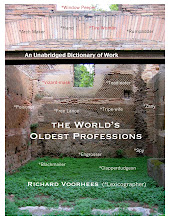On a scale of 1 to 10—8. Too ridiculously profitable to last.
“This Yodoya, a rice merchant, was as much a symbol of his time as Yasui. His fortune is said to have included 21 solid-gold hens, with 10 chickens; 14 solid-gold macaws; 15 solid-gold sparrows; 51 solid-gold-and-silver doves; innumerable precious stones; 150 pounds of quicksilver; more than 700 swords; over 17,000 rolls of velvet, silk, and brocade; 480 carpets; 50 pairs of gold screens; 96 crystal sliding doors; a solid-gold checkerboard three inches thick; 3,500,000 ryo in gold coin (roughly 146,000 pounds troy); 14,000,000 ryo in silver (roughly 583,000 pounds troy); 550,000 copper coins; about 750 Chinese paintings; 540 mansions, houses, and warehouses; and 250 farms and fields. Most of this wealth had been accumulated by two generations of Yodoyas, after the family residence had been converted into an open market where feudal lords could exchange their rice for money, then just coming into general use. Thus the fortune was made at the expense of the lords themselves, who had little talent for business. From this we may judge that it was not in the interests of economy alone that the shogun censured Yodoya for his extravagant ways, and finally confiscated his wealth entirely. Yodoya was dangerous, not just as a bad example for the shogun’s subjects, but also as a rival potentate, an upstart who bled his betters in order to create a strange new empire.”
Wm. Theodore de Bary in his introduction to Ihara Saikaku, Five Women Who Loved Love (1686).
Thursday, April 16, 2009
Subscribe to:
Post Comments (Atom)

No comments:
Post a Comment